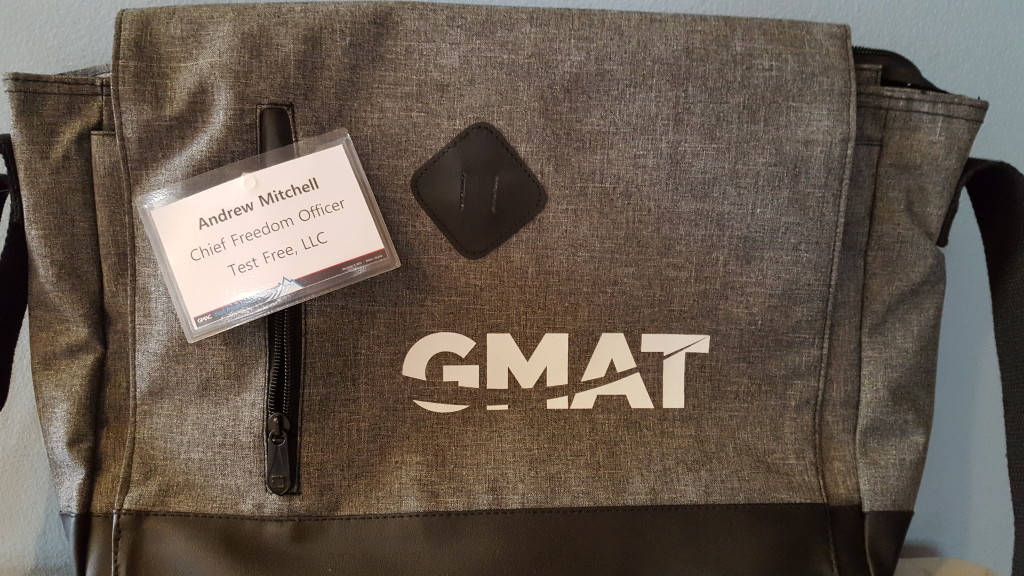
GMAT Messenger Bag: Spoils of Glamorous Life as Test Prep Nerd
I’m just back from the Reston, VA headquaters of GMAC, the Graduate Management Admission Council, the organization that creates the GMAT. In this session, which was held on December 9, 2016, we covered what’s new in the world of the exam and business school admissions.
(If you’re looking up GMAC, note that the GMAC website, http://www.gmac.com/, is aimed primarily at business school admissions officers. To register for the GMAT and get information about the test, head to http://www.mba.com.)
On study hours and score improvement:
- The median number of study hours is 90 for those scoring 700-750, and 80 for those scoring 750+. Some people in these categories study very little, and some study a lot, but 100 hours remains a good estimate of solid preparation.
- Retaking the test can lead to score improvement. Of those who score about 700 and retake to aim for a yet higher score, 56% see score improvement upon retake. The percentage who improve is a little higher for people starting at a lower score. The more you have prepared, the harder it will be to improve. For example, if you have scored 600 on only 10 hours of prep, your odds of improving your score are excellent. But if you score 600 on 100 hours of prep, your odds of improving plummet (it is more likely to be a long, tough road).
On GMAT test-taking policies:
- Score cancellation: A relatively recent change is that you can see your score when you finish your exam and have the option to cancel it, either on the spot or within 72 hours. This policy reduces the risk around taking the test. Also, it allows you to take the GMAT at the beginning of your preparation as a way of getting to know the test.
- You may retake within 16 days, and you may reinstate canceled scores online.
On the market of test-takers:
- The body of test takers has continued to show explosive growth in China and stasis or slight reduction in the U.S. In very rough terms, the number of annual GMAT takers is about 100,000 and a bit more than that in the rest of the world combined. China now has over 50,000 annual test takers.
- The percentage of female GMAT takers continues to grow steadily; in the USA it’s now a bit above 40%.
- Non-MBA business programs, such as specialized Master’s programs, have emerged quickly over the last few years as a substantial alternative to the MBA, especially in Europe. My guess is that growth will level off and these programs will represent about 25-35% of test takers in the future.
The GMAC puts considerable effort into making the GMAT as fair and friendly as possible for test-takers and into keeping stakeholders informed. Thanks to Pam Brown, Vineet Chabra, Sangeet Chowfla, Camille Coppock, Fanai Croff, Manish Dharia, Fanmin Guo, Matt Hazenbush, Anthony Mitchell, Lisa Peters, Sabrina White, and the whole team.